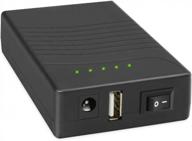
Review on Renewed Samsung S20 Ultra Cosmic Black 5G Factory Unlocked SM-G988U1 with US Warranty and 128GB Storage by Agata Kaszyska (Lubi ᠌

The item is of good quality, there is only one minor defect.
I just looked at the camera features because I bought the phone almost entirely for its camera capabilities. I won't be taking any pictures with cameras because there are already so many of them online in a variety of different lighting situations. As a direct consequence of this, I arrived to this verdict. When shooting a scene, if you don't need 13mm and 103mm, and the lighting on the object is fairly even and non-contrasting (which does not require an increased dynamic range), then it is better to shoot in the [4:3 108mp] mode. The level of detail is quite satisfactory, and the picture looks much better. (the size of the file grows from 3 megabytes to 25 megabytes) If this is not possible, shoot in [4:3], [16:9], [1:1], and [Full], but if you want to keep the details of the 4000x3000 image, don't zoom in more than 3.9 times. This is because the super pixel function is turned on. Although Samsung says in the matrix advertising that "HM1's Nonacell and 108Mp technology delivers direct pixel conversion," which means that photographs captured with a 3x zoom will maintain great image quality at 12 MP, the technology does not provide this. In this instance, the zoom buttons have been implemented in a handy manner; by selecting the camera icon represented by a tree, you may rapidly move between 13 and 103 millimeters of focal length. In addition, avoid using zooming from 0.5x to 0.9x (given that the image resolution is 4000x3000 and that a matrix of 13mm already contains 12 megapixels).
- The following three cameras have lenses that are comparable to 35mm: a) Ultra-wide angle lens of 13 millimeters with a resolution of 12 mega pixels but no image stabilization. a) wide-angle 25mm, 108 MP Nonacell matrix with OIS stabilization; the image from this matrix can be programmed zoomed up to 6x in the shooting mode [4:3 108mp], and it can be magnified up to 3.9x in the modes [4:3; 16:9; 1:1 and Full]. Due to the combination of nine photodiodes under one filter (red, green, and blue) into one "super pixel," the image size in [4:3; 16:9; 1:1 and Full] is 12 megapixels. This allows you to either increase the dynamic range (different exposures of photodiodes under 1 filter) or reduce noise in low-light environments (the sum of information from 9 photodiodes reduces noise). The [4:3 108mp] mode already debayerizes 9 photodiodes while they are exposed to a variety of filters, which results in increased detail (reducing the range) c) a telephoto lens with 103 millimeters of focal length, 48 megapixels, and optical image stabilization that activates at a zoom level of 4 times in the 4:3 mode, 16:9 mode, 1:1 mode, and Full mode, and up to 100 times when using software (with resulting quality). But because the image in [4:3; 16:9; 1:1 and Full] is no more than 4000x3000 (12MP), and 103mm optics cannot resolve 48 megapixels pixel by pixel for effective zooming, as well as the requirement for a margin of pixels around the frame for the software stabilizer to work (if available), at best, the quality is higher than it was before. There is no point in counting the 8x zoom. With this in mind, the advantages are as follows: 1. Exceptional image stabilization, sufficient breathing room for shooting handheld in low-light conditions, and integration with telephoto lenses 2. All three cameras have a good dynamic range when used at low ISO 3. Clarity in the visual sweet spot in the middle of the picture 4. All models include separate cameras with focal lengths of 13mm and 103mm; however, the S20 and S20+ lack telephoto lenses and optical zoom; instead, the zooming is accomplished using a matrix with a focal length of 26mm and 64 megapixels. 5. A larger 1/2.5" ISOCELL Bright HM1 sensor that has been upgraded to a 1/1.33" sensor. 6. Combine nine diodes of a single filter into a single pixel to expand the dynamic range or lower the noise level.
- 1. In PRO mode. There are no 13mm or 103mm cameras included in this purchase. The only reason zooming happens is because the camera has a 25mm matrix. This is the Samsung product that I find the most difficult to understand. 2. Neither the 13mm nor the 103mm cameras will turn on when the mode is set to [4:3 108MP]. It would appear that Samsung is implying that these cameras are not fit for this mode because they do not have 108 megapixels. But, what this means for the user is something very different: the incorporation of the cameras' highest possible resolution. In this mode, photos as high as 1220228 megapixels can be used by cameras with a focal length of 13.25 millimeters or 103 millimeters, making the mode easier to utilize. On the other hand, Samsung erroneously believed that because it set the option to [4:3 108mp], there would be no need to rapidly swap to other cameras while shooting because this setting would suffice. 3. As a direct consequence of this, it is not possible to set a resolution of 48 megapixels when shooting at 103 millimeters. Just use the 4000x3000 pixel frame (12mp). At the same time, the matrix is a typical Bayer, not a Nonacell (for the capability of digital zooming up to 100x), and it has a size of half an inch. The reason behind such a limitation is unclear. 4. The "Photo" mode's exposure adjustment is implemented in a way that is not user-friendly. It is important to press on the object in order to bring up a scale that will then need to be modified in real time while it is being referred to as the brightness adjustment. In addition, I wish there was a distinct button labeled "Exposure" or maybe a settings menu for the photo. 5. The image does not have any color settings, sharpening, or noise reduction applied to it in any way. The configuration that Samsung uses to convert images from matrix to jpg is not one that works for me, therefore I either have to make do with raw images or otherwise. 6. Powerful noise reduction with artifacts in low light conditions; this indicates that the 108MP sensor (even in super pixel mode) and the 48MP sensor both have noise. All of the problems are caused by the software, and Samsung could fix them with an update if they wanted to.
New products
Comments (0)
Similar reviews
Top products in 📱 Cell Phones
Another interesting products

Rechargeable 12V 3000MAh Lithium Battery Pack: Power Bank For LED Strip, CCTV Camera & More

43 Review

Sennheiser HD 206 Closed-Back Over Ear Headphones - Discontinued Model

195 Review

Keyboard Cover For HP Pavilion X360 14 14-Dk 14M-Dh 14-Dq/Dh 14-Fq 14-Ce/Cf 14T-Dh200 14-Dq0070Nr 14-Fq1025Nr 14-Dq0011Dx/Dq0004Dx/Dq0002 14-Dh2011Nr Fq1097Nr 14T-Dq300 14Z-Fq000 14-Cb185Nr, GPink

39 Review

2PCS Pack 15.6" Laptop Screen Protector | Compatible With HP/DELL/Asus/Acer & More | 16:9 Display

41 Review







